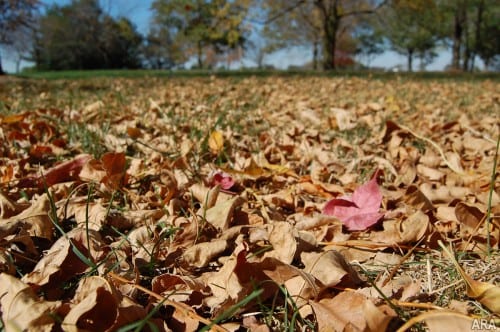Fall Leaf Removal

The vibrant colors of autumn leaves are a spectacular display, but once they begin to fall the lawn needs attention more than ever in order to prepare for the winter months ahead. Neglected leaves on the lawn inhibit air and light from reaching leaf blades, therefore reducing its ability to thrive. Turf growth begins to slow and go dormant during the winter months, but the plant still needs to create vital nutrients.
Leaf litter also creates a darkened and damp environment, which is a breeding ground for insects and disease. After hibernating in your leaf pile all winter, insects will be ready to have a party in the spring!
Newly-seeded lawns are at the greatest risk for dead spots due to smothering leaf debris since they are weaker plants and will most likely die off quicker than established turf. It does not take long for stress to begin so help minimize chances for damage by removing leaves at frequent intervals rather than waiting for one big clean-up. If possible, use a leaf blower to collect leaves instead of raking. Raking is tough on young grass.

What to do with the leaves afterward? Mulch them into your landscape beds! Most would bag them up and call it a day but landscape trees, shrubs, and perennials actually welcome the winter protection of fall leaves, providing them with warmer soil temperatures and retaining moisture. Landscape plants continue to need moisture during the winter months due to the desiccating effect that winter winds can have on them. Landscape plants will also benefit from the nutrients released once fall leaves begin to decompose.







